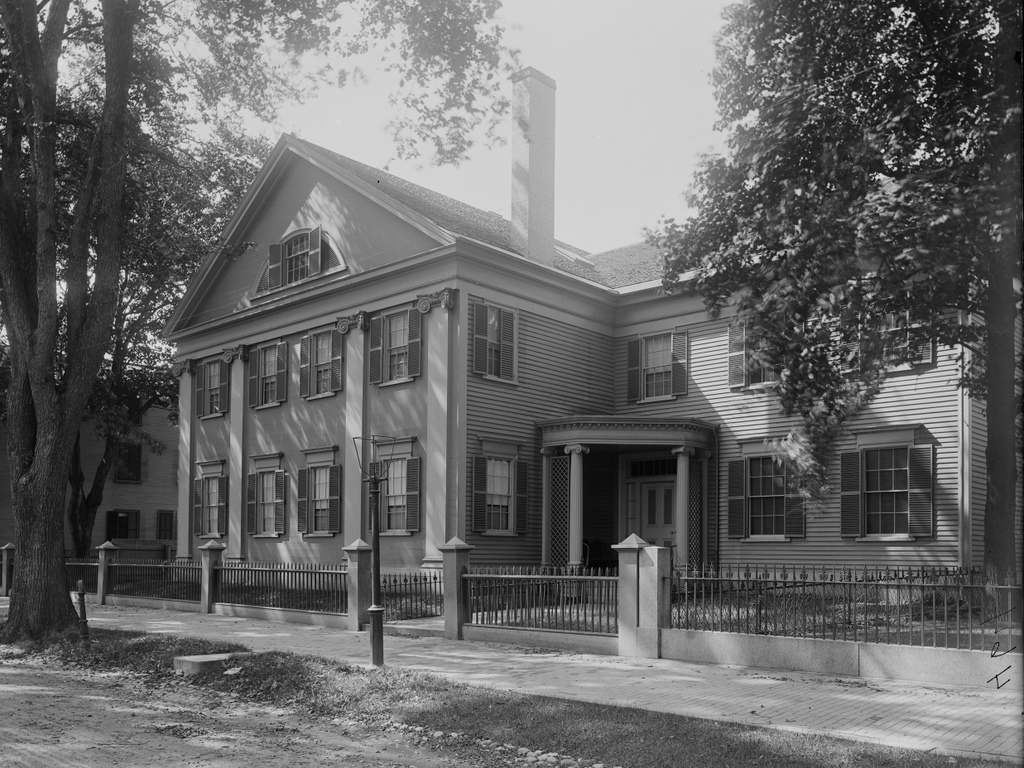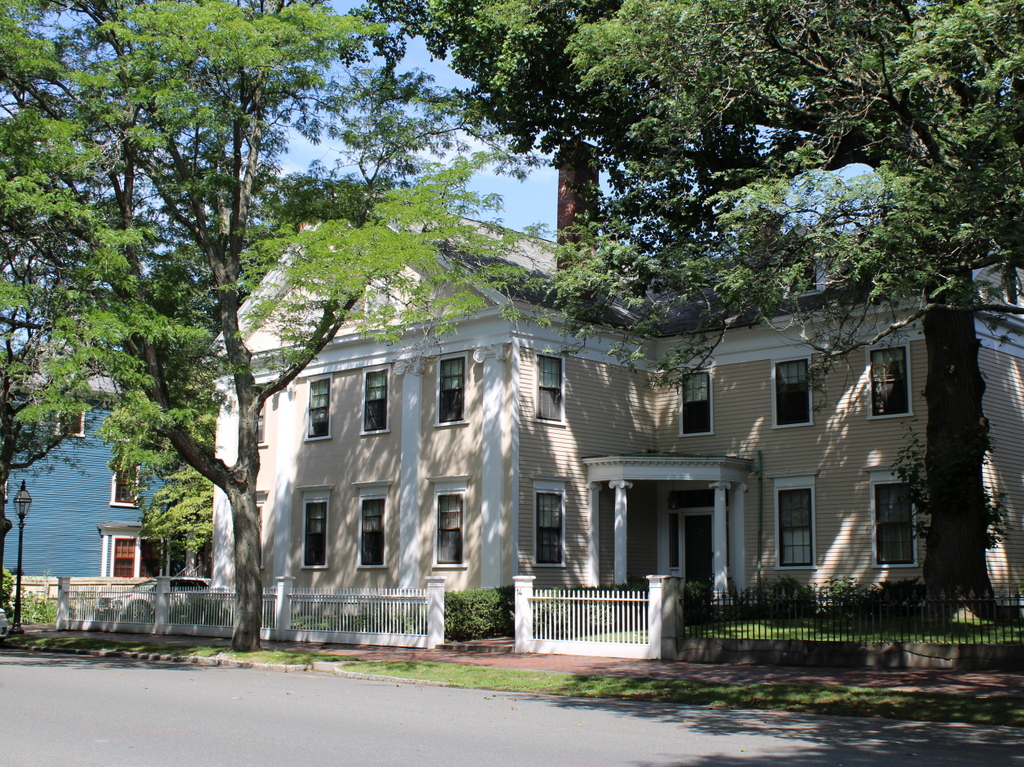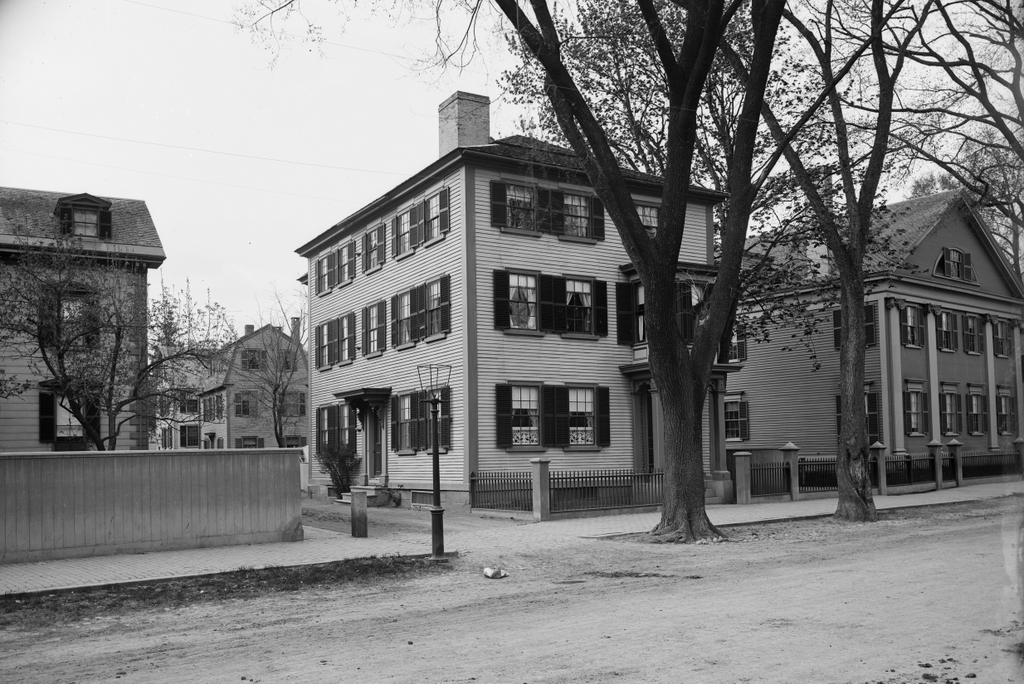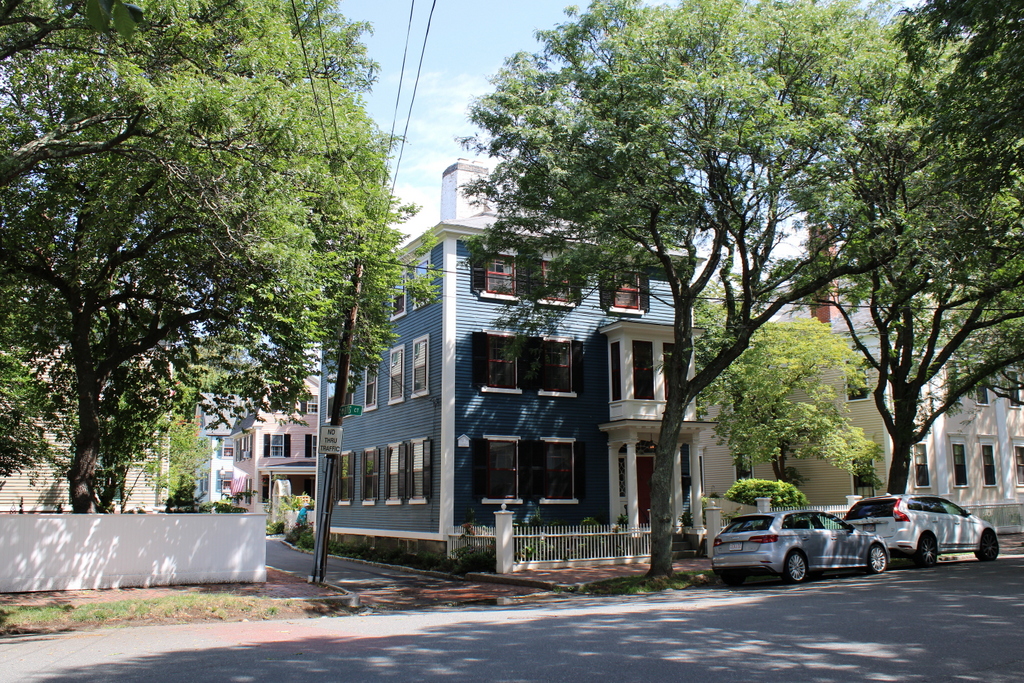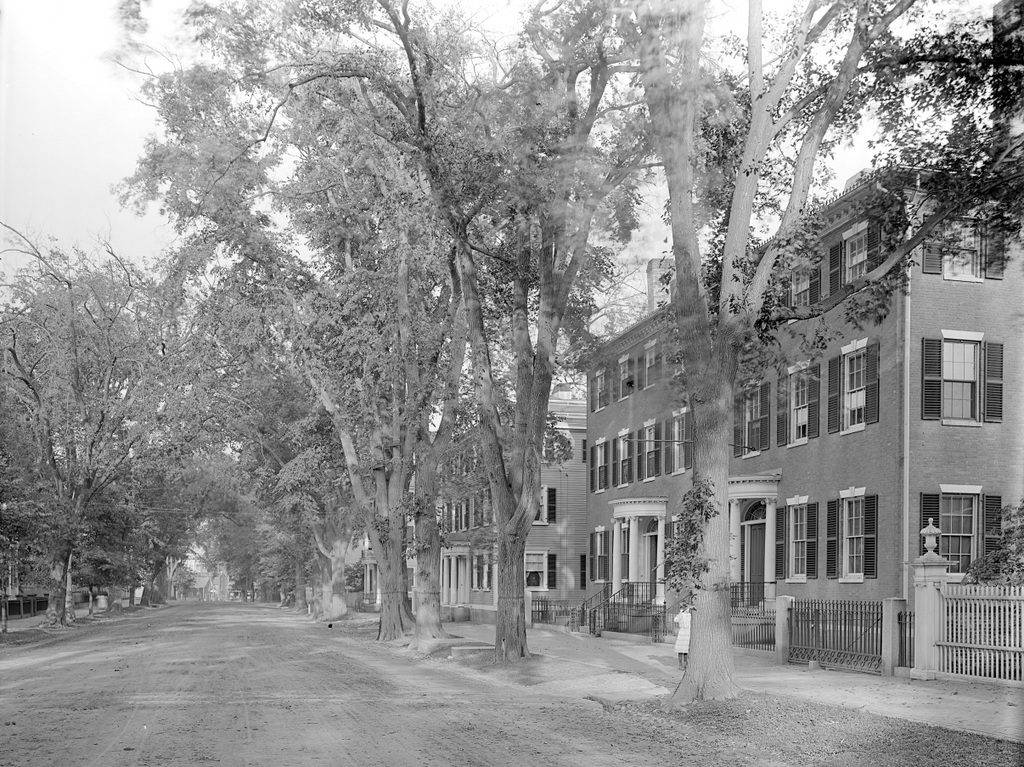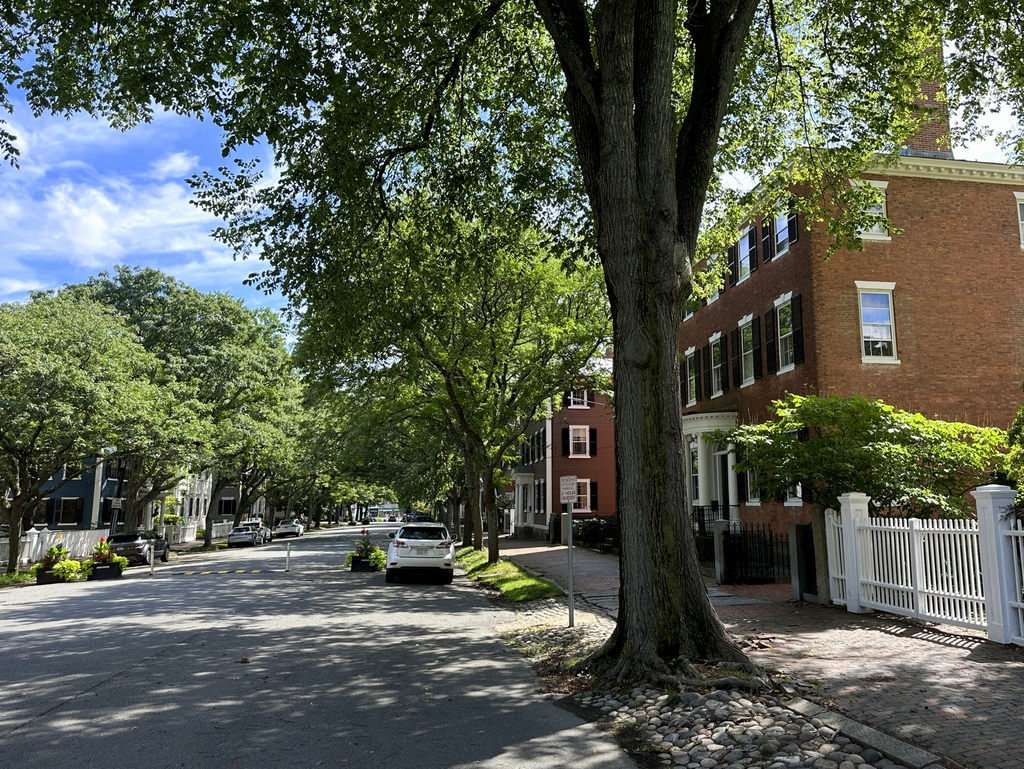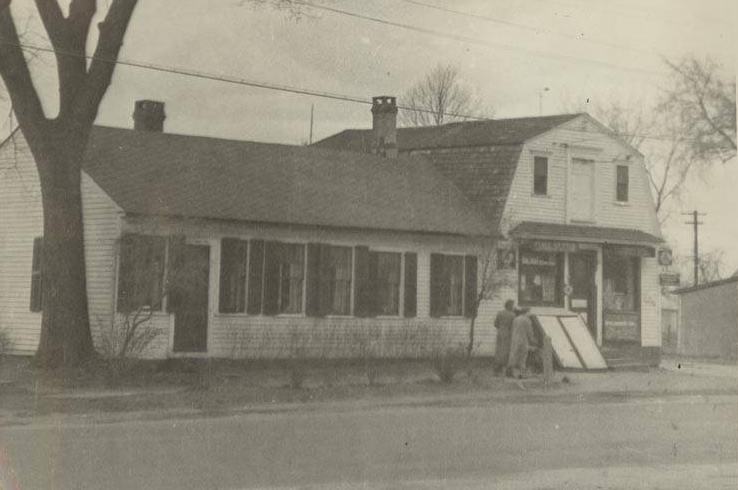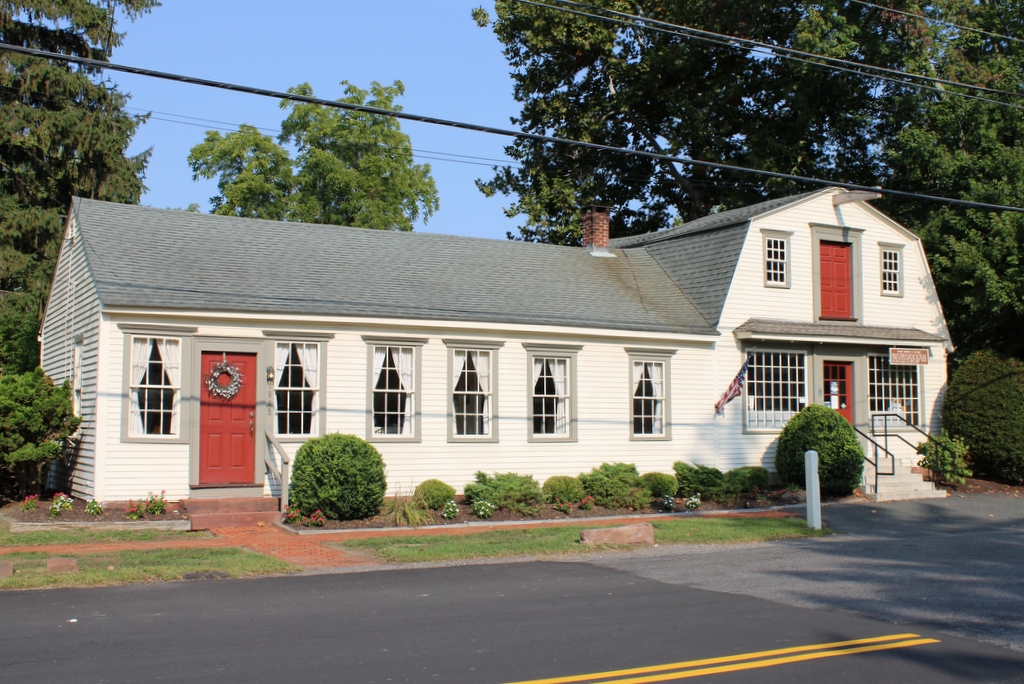The house at 14 Chestnut Street in Salem, probably around 1890-1910. Image courtesy of the Phillips Library at the Peabody Essex Museum, Frank Cousins Glass Plate Negatives Collection.
The house in 2023:
These two photos show the house at 14 Chestnut Street in Salem, which was built in 1834-1835 as the home of John Clarke Lee. It is one of the newer houses on Chestnut Street, as most of the other homes were built in the first few decades of the 19th century. As a result, it is architecturally different from most of the other homes. While the rest of the street consists primarily of symmetrical, three-story Federal-style homes with hipped roofs, this house is an early example of Greek Revival architecture. It features a gabled roof, and the front façade is decorated with four pilasters that give the house something of the appearance of an ancient Greek temple.
John Clarke Lee was a prominent merchant and banker who later became a partner in the Boston-based investment banking firm of Lee, Higginson & Co. He was about 30 years old when he moved into this house, and by this point he and his wife Harriet already had a large and growing family, with five young children. They subsequently had five more children, and in total all but one of their children lived to adulthood. Among their children was George Cabot Lee, whose daughter Alice Hathaway Lee became the first wife of Theodore Roosevelt.
The house remained in the Lee family for nearly a century. John died in 1877 and Harriet in 1885, but their son Francis inherited the house. He was living here when the top photo was taken around the turn of the 20th century, and he was responsible for adding the porch at the front door, as shown in the two photos. He died in 1913, and his widow Sophia subsequently sold the house in 1924.
The next owner of the house was Frank W. Benson, a prominent Impressionist painter from Salem. He was in his early 60s when he purchased the house, and by this point he had established himself as one of the leading American painters of the early 20th century. Benson was known for his portraits, along with en plein air landscapes of the seacoasts and mountains of New England. He lived here in this house until his death in 1951, at the age of 89.
Today, the house is still standing, with few exterior changes since the top photo was taken more than a century ago. Even the tree on the far right side of the scene appears to be the same one in both photos. Along with the rest of the street, the house is now part of the Chestnut Street District, which was added to the National Register of Historic Places in 1973.

